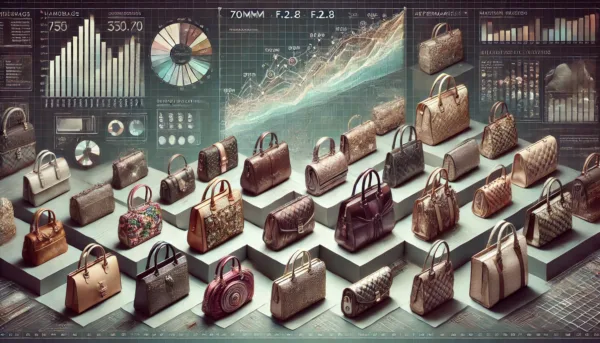TL;DR: Artificial intelligence (AI) is revolutionizing the fashion industry by enhancing trend prediction, consumer personalization, and customization, but it also raises significant concerns. The energy demands of AI technologies can contribute to environmental issues if sustainable practices are not implemented. While AI creates hyper-personalized shopping experiences, it risks isolating consumers in “fashion bubbles,” limiting their exposure to diverse styles and stifling creativity. Additionally, AI-powered robotics enable rapid production but pose challenges related to global trade logistics and environmental costs. The use of AI in sentiment analysis can manipulate consumer behavior, leading to ethical concerns about autonomy and authenticity, as brands may exploit emotional triggers to create dependency. To address these challenges, fashion brands must invest in sustainable AI technologies, ensure diversity in offerings, and maintain transparency in their practices, navigating the promising yet risky landscape of AI in fashion with ethical responsibility.
Artificial intelligence (AI) has indisputably revolutionized the fashion industry, particularly in the realms of trend prediction and consumer personalization. However, while the immediate benefits of AI-driven fashion are tantalizing, there are emerging concerns that we must address. The energy costs, potential environmental impacts, and the ethical dilemmas surrounding AI integration into fashion all present significant challenges that could redefine the industry’s future.

Energy Costs and Environmental Concerns: The Hidden Price of AI
As AI technologies become more entrenched in fashion, the energy demands of these systems have skyrocketed. The computational power required to run complex algorithms, process vast amounts of data, and maintain the servers that support these operations is immense. This energy consumption is not just a technical detail; it’s a significant environmental burden. For instance, there are companies that analyse over three million images daily to predict fashion trends, which raises questions about the energy costs associated with such extensive data processing.
In a world already grappling with climate change, the fashion industry must consider the environmental ramifications of AI. Just as fast fashion has been criticized for its environmental impact, AI-driven fashion risks becoming another heavy burden on the environment if sustainable practices are not integrated into its growth. The industry must prioritize green energy solutions and develop more energy-efficient AI systems to mitigate this impact.
The AI-Powered Personalization and Its Implications
With AI’s ability to analyse consumer behaviour down to the finest details, users are increasingly likely to have their own “front-end” AI—essentially personalized filters that curate content based on individual preferences. This mirrors what social media networks currently do, creating echo chambers that reinforce existing beliefs and tastes. In fashion, this could lead to a hyper-personalized shopping experience where every user sees a tailor-made world of trends, styles, and products.
Brands like Amazon and Adidas exemplify this trend. Amazon employs AI algorithms to provide personalized recommendations based on extensive customer data, enhancing the shopping experience. Adidas uses generative AI and 3D printing to craft custom shoe designs tailored to each customer’s foot shape, showcasing the potential for AI to revolutionize personalization in fashion.
While this level of personalization can enhance the consumer experience, it also risks isolating individuals in their own fashion bubbles. The diversity of fashion, traditionally driven by the mingling of various styles and influences, could be at risk as consumers are continually fed what they already like, rather than being exposed to new and different trends. This “bubble effect” could stifle creativity and lead to a homogenization of fashion, where individuality is lost in a sea of algorithm-driven conformity.
Fashion and AI Robotics: A New Era of Customization
AI’s integration into fashion isn’t limited to trend prediction and personalization. The rise of AI-powered robotics capable of intricate design and rapid production will revolutionize how we think about fashion itself. For instance, Zegna’s AI-powered configurator allows customers to personalize products with any combination of colours and fabrics, reflecting a shift towards individualized fashion experiences.
However, this also raises questions about the future of global trade and the environmental costs of such rapid production. As AI-driven robotics weave the threads of fashion into the global trade tapestry, the logistics and energy costs associated with shipping these customized goods around the world must be considered. While the idea of hyper-customization is appealing, it must be balanced against the broader implications for sustainability and global trade dynamics.

The Evolution of Sentiment Analysis: From Prediction to Manipulation
AI has advanced sentiment analysis from a basic tool for gauging consumer feelings to a sophisticated mechanism for driving consumer behaviour. Valentino’s ‘Essential’ campaign, which utilized generative AI to craft visuals that resonate with consumer emotions, illustrates how brands can leverage AI to influence purchasing decisions.
But there’s a darker side to this evolution. AI’s ability to manipulate consumer sentiment at such a granular level raises ethical concerns. Are consumers being subtly coerced into purchasing products they don’t need or want? The risk of AI accelerating our march toward the lowest common denominator in consumer culture is real. In a digital landscape where outrage and extreme opinions ring loudest, AI could inadvertently amplify these voices, leading to a marketplace driven more by emotion than by genuine consumer need or desire.
Navigating the AI-Driven Future of Fashion
As the fashion industry continues to integrate AI into its operations, it must navigate a complex web of ethical, environmental, and societal challenges. The energy costs associated with AI, the potential for hyper-personalization to create fashion bubbles, the rise of AI-driven customization, and the ethical implications of advanced sentiment analysis all point to a future where the role of AI in fashion is both transformative and fraught with risk.
Fashion brands must take a proactive approach to these challenges. This includes investing in sustainable AI technologies, ensuring diversity in AI-driven fashion offerings, and being transparent about how AI is used in marketing and product development. For instance, AI-driven merchandising services are helping fashion brands forecast demand and manage inventory more effectively, which can reduce waste and improve sustainability.
By doing so, the fashion industry can harness the power of AI while safeguarding the creativity, diversity, and sustainability that are the hallmarks of its legacy. The promise of AI in fashion is vast, but so are the stakes. If the industry is to fully embrace AI, it must do so with a keen awareness of the potential pitfalls and a commitment to steering its development in a direction that benefits both consumers and the planet. The future of fashion, like AI itself, is a blank canvas—one that must be painted with care.





































